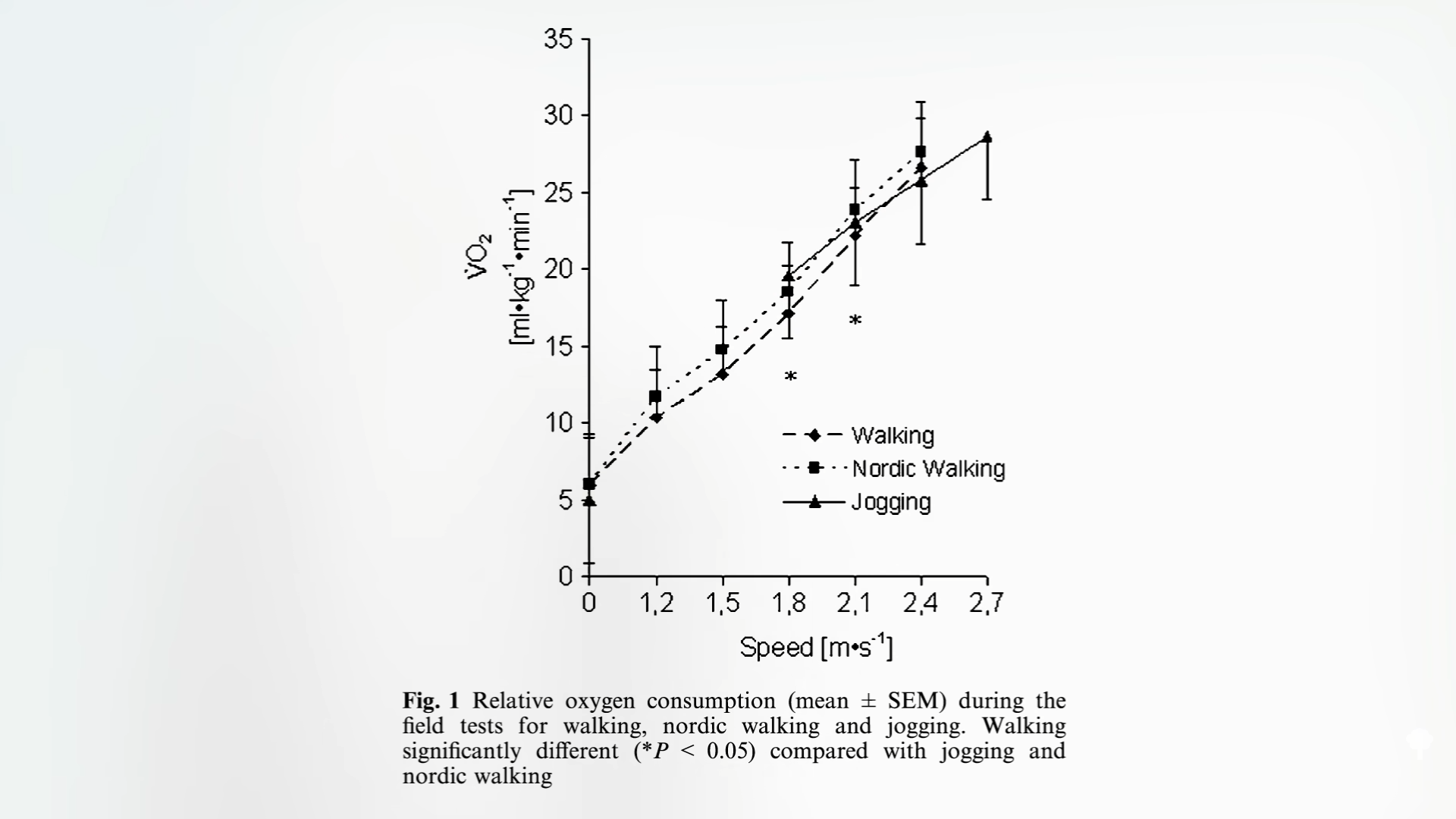Does walking with poles, also known as Nordic pole walking or “exerstriding,” beat out regular walking for depression, sleep quality, and weight loss?
Exercise recommendations for obesity have been referred to as “the mysterious case of the public health guideline that is (almost) entirely ignored.” Governmental, scientific, and professional organizations call for at least an hour of exercise a day for weight management, but “almost no obese adults meet this target.” As you can see below and at 0:32 in my video Are There Benefits of Pole Walking for Weight Loss?, surveys suggest American men and women watch television ten times more than they exercise.

For Americans with obesity, it may be even worse. Only 2 percent reach even 30 minutes a day, as you can see below and at 0:36 in my video, and the percentage exceeding an hour of exercise a day is expected to be close to zero.

Why don’t individuals with obesity exercise more? Why don’t we just ask them? When questioned, “obese adults typically describe exercise as being unpleasant, uncomfortable and unenjoyable.” How can we break this vicious cycle, where inactivity can lead to weight gain, which can lead to further inactivity and even more weight gain? The first thing to recognize is that “it is normal and natural to be physically lazy.”
“Nothing in Biology Makes Sense Except in the Light of Evolution” is the title of a famous essay written by a noted geneticist. Laziness is in our genes. We evolved to instinctually avoid unnecessary exertion to conserve energy for survival and reproduction. These days, there’s no shortage of available fuel, yet the hard-wired inertia remains. “The vast majority of people today behave just as their ancestors by exercising only when it is fun (as a form of play) or when necessary.” Just like dietary change for weight control, the only way exercise is going to work long-term is if it becomes “a stable, ideally lifelong, activity habit.” Exercise is only effective if it’s sustainable. So, we need “to restructure our environments to require more physical activity,” like using a treadmill desk, and figure out how to make exercise more enjoyable. It should just be a walk in the park—literally, perhaps!
Some wise advice from a 1925 medical journal entry: “The best prescription to be written for a walk is to take a dog…and a friend.” Listening to your favorite music might also help. Music has been described as “a legal method” for improving peak performance and, more importantly, enhancing the enjoyment of high-intensity interval training. As you can see below and at 2:37 in my video, listening to a preferred playlist during exercise can significantly reduce your “rate of perceived exertion,” which is how hard you feel your body is working. When severely obese youth got on a treadmill and were told to go until exhaustion, with or without music, those listening to their favorite tunes “ran significantly longer,” tending to go about 5 percent longer. This was chalked up to “attentional distraction”; the music may have helped them keep their mind off feelings of fatigue. If that’s the case, listening to a podcast or audiobook might have a similar effect.

One way to up your walking game is with walking poles. So-called Nordic walking, also known as exerstriding or Viking hiking, was originally developed in Scandinavia to maintain cross-country ski athletes’ training in the summer. It’s since gained in popularity worldwide as a general fitness activity. The augmented engagement of the upper body musculature may result in an 18 to 22 percent increased calorie expenditure over walking alone (depending, in part, on your pole handling technique). Does that translate into accelerated weight loss?
Before and after studies demonstrate weight loss with pole walking, compared to a sedentary control, but what about compared to regular walking? Of the four such studies I could locate, comparing thrice weekly 40- to 60-minute sessions of Nordic pole walking to regular walking, every single one found no significant difference in body fat measures after 8 weeks, 12 weeks, another at 12 weeks, or 13 weeks. You can see the last one below and at 4:16 in my video.

There are, however, other benefits over regular walking, such as increased upper body muscle bulk, improved muscular endurance, and increased strength, as seen below and at 4:20 in my video, though not as much as was seen with resistance-band training. But, as I was writing How Not to Diet, there wasn’t any evidence of a weight-loss-enhancing effect, which is why Nordic walking didn’t make the cut. Just as we were going to press, a study was published—the first to combine Nordic walking with diet, compared to the same dietary program with regular walking. And, once again, no significant difference was found in body weight or anything else. There was a hint that those in the pole group enjoyed it more, and, in the end, exercise only works if you do it, so that may be a benefit.

There may be other benefits, too. As you can see here and at 5:05 in my video, Nordic walking beat out regular walking in terms of reducing symptoms of depression and improving sleep quality.

Perhaps this should not be surprising, given the greater exercise intensity of pole walking, even approaching that of jogging at higher speeds, shown below and at 5:15 in my video. And that’s where I see the role of walking poles—to fill the intensity gap between people who are ready to graduate from walking but aren’t ready for more rigorous activities, such as running. The only potential downsides are the added expense and, “reminded of Monty Python’s famous ‘ministry of silly walks’ sketch…‘feeling fairly ridiculous’ when trying Nordic walking for the first time.”

However you walk, there are a lot of benefits. Check out my video Longer Life Within Walking Distance.
Related videos include How Much Exercise to Sustain Weight Loss? and How Much Should You Exercise?.


Recent Comments